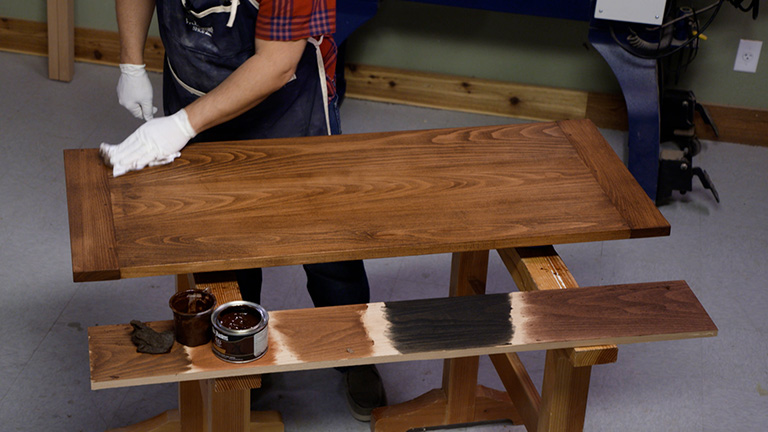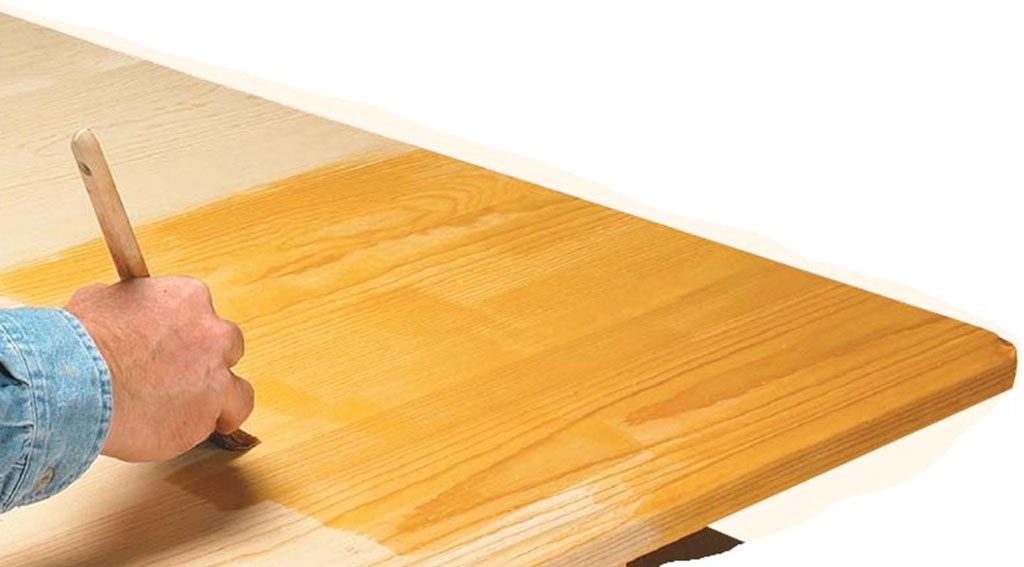No matter how careful I am when gluing up a large, solid-wood panel for a project, the joints between the boards never seem to end up perfectly flush. So when the clamps come off, the panel needs to be smoothed out before moving on to the next step. To do this, I use my belt sander and a simple technique that gives me a perfectly flat panel.

You’ll find that once you get started, it can be difficult to tell the high spots from the low spots and where you’ve sanded from where you haven’t. The trick here is to give yourself a visual reference by dragging the side of a pencil back and forth across the panel. Then, as you sand, the disappearing pencil lines will be a guide to your progress.

Now, with the panel held tightly by the bench dogs and a clean, 80-grit belt on the sander, I start sanding straight across the width (crossgrain) of the panel. I know sanding across the grain sounds a little odd, but at this stage you’re simply trying to level the joints and flatten the panel. And sanding crossgrain is the quickest way to get the job done. Starting at one end, overlap your strokes as you work down the length of the panel. Concentrate on keeping the sander moving steadily to avoid creating dips or gouges.

Even though the idea is to get the job done fast, you want to avoid “getting in rut,” so to speak. So after one perpendicular pass along the length of the panel, I repeat the process, now moving the sander diagonally across the panel. Just be sure to cover the entire surface, including the edges. If you find it hard to reach across the panel, turn it end for end. When all (or most) of the pencil lines are sanded away, lay a straightedge across the panel to check for flatness. The high spots you find are marked again to show where you need to focus your efforts. You’ll want to do this every 6 or 8 inches along the length of the panel. Then, after switching to a 100-grit belt, I go back to work, still sanding across the grain and concentrating on knocking down the high areas.

The final step is to remove all the crossgrain sanding scratches by sanding with the grain. On longer panels, it’s easier to work on one section at a time. So first, I divide the panel into manageable sections with sets of pencil lines. The goal is to create a smooth, scratch-free surface ready for finish sanding. So here, I switch to a slightly finer (120-grit) sanding belt. The key is to sand the surface thoroughly and then check closely for any little telltale scratches left from the previous sanding step. Work on each section until it passes the test and then finish up by lightly sanding the area between the sections.













